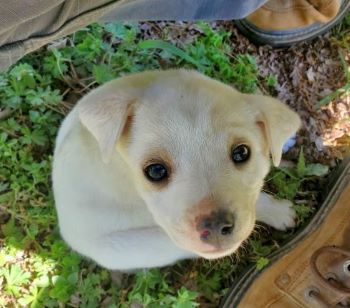
Forecasting is a daunting task during normal conditions, and even more so during a disruption. But in times of greatest stress our smartest and most creative people stand out, and our true leaders emerge.
You'll find these kinds of leaders among my colleagues at SAS -- smart and creative people who confront a challenge, take the initiative, and drive results. Instead of whining like a puppy over petty grievances, denying responsibility, and casting blame for the situation on everyone but themselves, these true leaders provide the ideas and decisive actions to move us forward.
Three weeks ago The BFD shared guidance from an industry panel organized by the Institute of Business Forecasting. That same week my colleague Charlie Chase provided his 6 Steps to Predicting Shifting Demand Patterns While Navigating the Coronavirus. Today we'll look at efforts by other SAS colleagues alongside a customer in the food and beverage industry. It is a story of fast, creative action to maintain an effective global supply chain.
Forecasting During Chaos: The Situation
Medical supplies and food are two of our most critical supply chains. Facing impacts to supply chain and restrictions imposed by governments, this European arm of a global consumer goods company needs to understand the impact on sales and production of key products by country.
As a major food producer, they maintain both production sites and supply chain. This is complicated by the potential for staff shortages due to sickness, and through other changes that impact accessibility to sites in multiple European countries.
It is necessary, therefore, to analyze current consumer behavior with respect to historical behavior. To create multiple business scenarios based on supply chain constraints and other inputs. And to predict future sales volumes by product and geography.
Forecasting During Chaos: An Approach
In the present conditions of chaos and disruption, our traditional time series modeling techniques (that work in stable times) are much less relevant. Instead a range of advanced analytics and AI methods available in SAS can be applied. For example, the problem may be more akin to new product forecasting, where you look to analogies with prior experience (previous introductions of similar new products). You might also consider other types of disruptions, such as an earthquake or hurricane, or even disruption due to a marketing promotion.
"You should look at markets that are already in later stages of the epidemic" says Pasi Helenius, Principal Data Scientist on the SAS AI Team, "and see what could be learned and transferred to markets that are still experiencing earlier stages." This describes the general idea of the approach being used. It goes beyond a dashboard of where we're at now, applying a wealth of SAS capabilities in clustering, similarity analysis, forecasting, epidemiological models, and simulation to show us where we're going to be.
For example, China and South Korea are now in what might be called the "new normal" phase of COVID-19. They have already experienced phases of early rapid spread, followed by government actions to restrict travel and social behavior, and finally some easing of restrictions. “Knowing how effective restrictions are at limiting the spread of COVID-19 depends on calibrating these government mandates to observed decreases in infection rates using epidemiologic models,” says Marc Kessler, Principal Software Developer in Scientific Computing at SAS. “That’s also a key way to learn which measures work best.”
Italy, the United States, and most other countries are still progressing through the phases. Yet what we've learned from early hot spots -- such as the impact on demand patterns -- can inform better decisions at today's (and tomorrow's) hot spots, improving outcomes going forward.
The Science of Caring
Let SAS empower you with the latest statistics about COVID-19. Gain insights from our visualizations of cases and trends, by accessing the COVID-19 Data Analytics Resource Hub.
Also, join the collaboration with SAS and others to understand, model, and mitigate COVID-19 through analytics. Visit https://github.com/sassoftware/covid-19-sas to see the initial collaboration between Cleveland Clinic and SAS. There you can explore the code and documentation for the SIR & SEIR model implementation.

